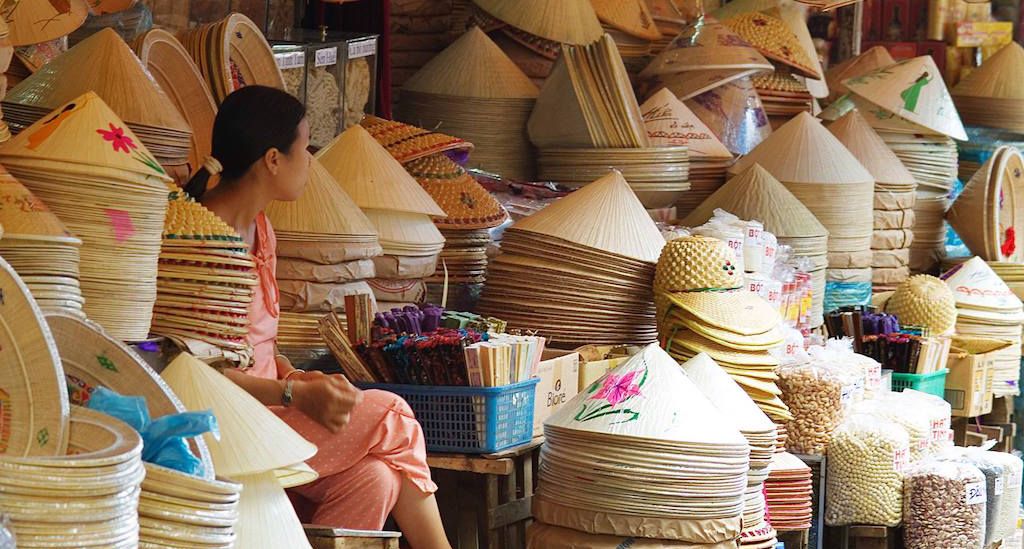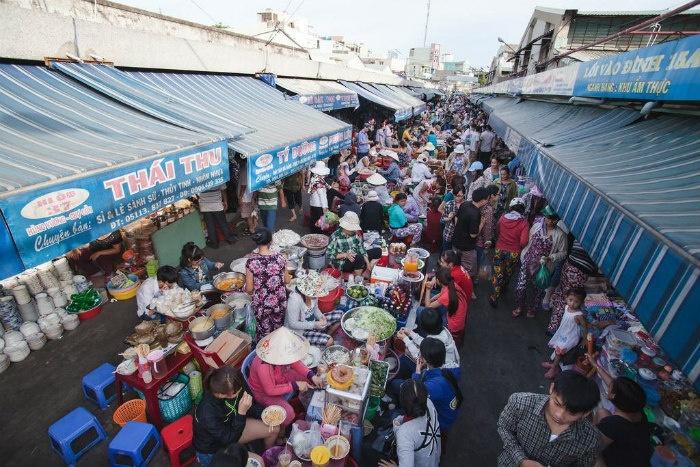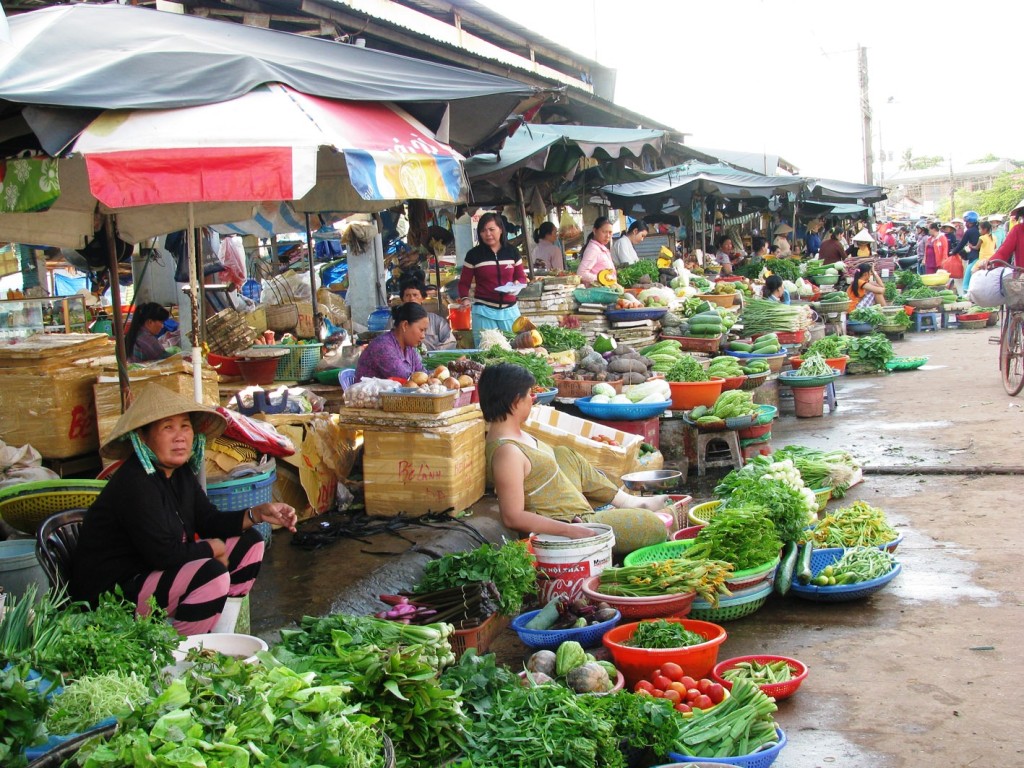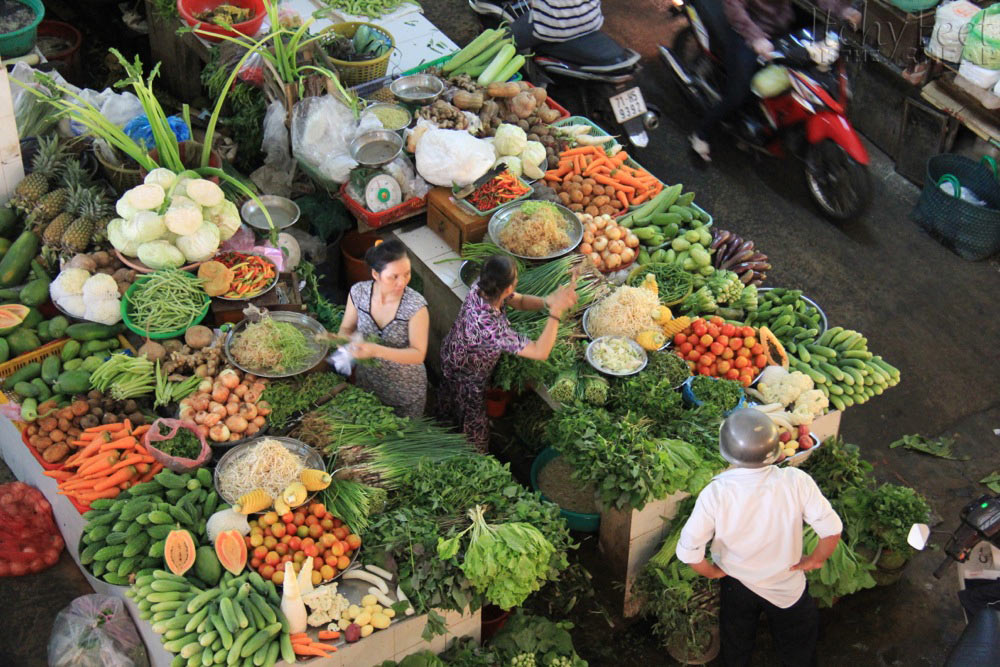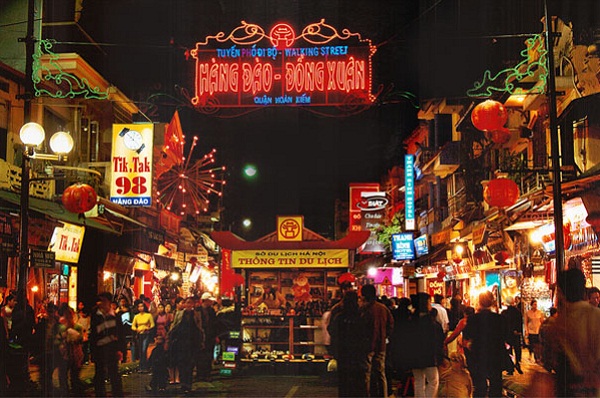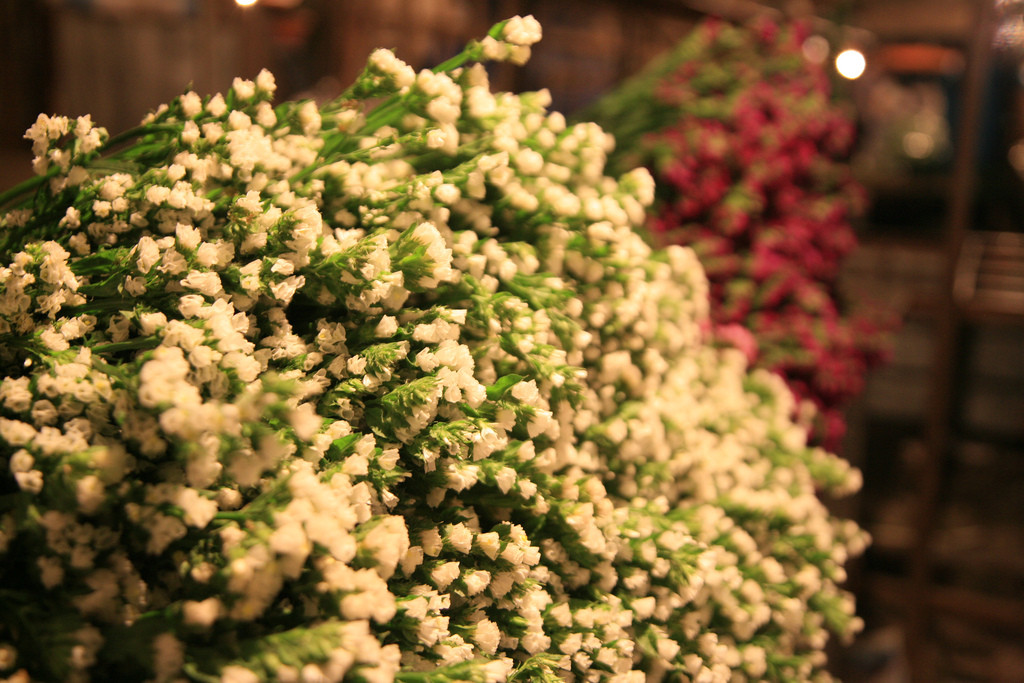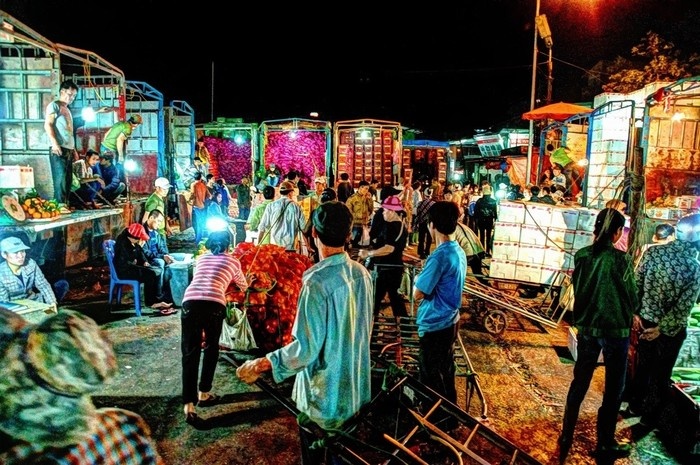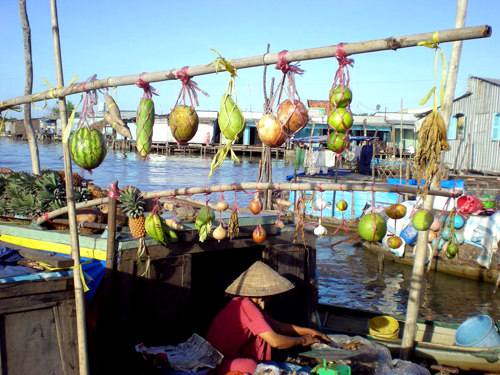The most frequent thing you would encounter in Vietnam is no other than the market. There are a lot of markets, almost in every corner in the streets of Vietnam. Markets are where Vietnamese people eat, trade, and talk. All these actions happen on open streets. There might be a prejudice that these markets are dirty, noisy or complicated places. Actually, that might be true but I’m sure you will find more.
Daily market
The daily market has a little bit of everything, especially big markets. They are like trading hubs of the region. In these markets, there are sessions for each kind of goods like clothing area, raw ingredients, vegetables, food streets, etc.
In smaller markets (chợ cóc), most foods, fruits, vegetables are available. Unlike in European countries, where people go shopping in supermarkets and they get an amount of food to use in a week, Vietnamese people can visit twice a day to their local small market that is located to the very next alley to buy ingredients for lunch and dinner. Therefore, the foods in markets always have to be fresh.
The earlier you come, the fresher the foods you will get. So that’s why markets in Vietnam often start at 5 am or 6 am. We can name some famous daily markets that open every day such as Dong Xuan market, Old Quarter in Ha Noi, or Ben Thanh market and Cho Lon market in Ho Chi Minh City.
Night market
Night markets are usually places for tourists. Foods, desserts, souvenirs and gifts are available. In Hanoi, the night market in Old Quarter opened every weekend attracts many local youngsters and tourists.
Another special market we must mention is the Quang Ba flower market in Tay Ho district which starts around 2 am. This is a head-market where all species of flowers gather making a vibrant picture full of colours. In occasions like 8th March, Valentine, Teacher Day, the market is always crowded.
Long Bien night market is right under the famous Long Bien Bridge often be left out in the list of travellers. But if you want to give you a try, you won’t be disappointed. This is a vegetables and fruits wholesale market of the city, one of the head-markets of Hanoi. It gets busy in very early hours of the day when stallholders from the local wet markets, restaurants and other businesses visit stock up for the day. Walk around the market, watching people busy trading and bargaining then welcome the dawn on Long Bien bridge would be an amazing experience.
Fair market
The fair market is occasionally gathered in a fixed location on a fixed day of a week or month or year, the day in between the fairs would be shorter like 3 days, 4 days or 5 days. You can find fair market everywhere; a fair market might be a day market, a night market or a floating market, or a love market.
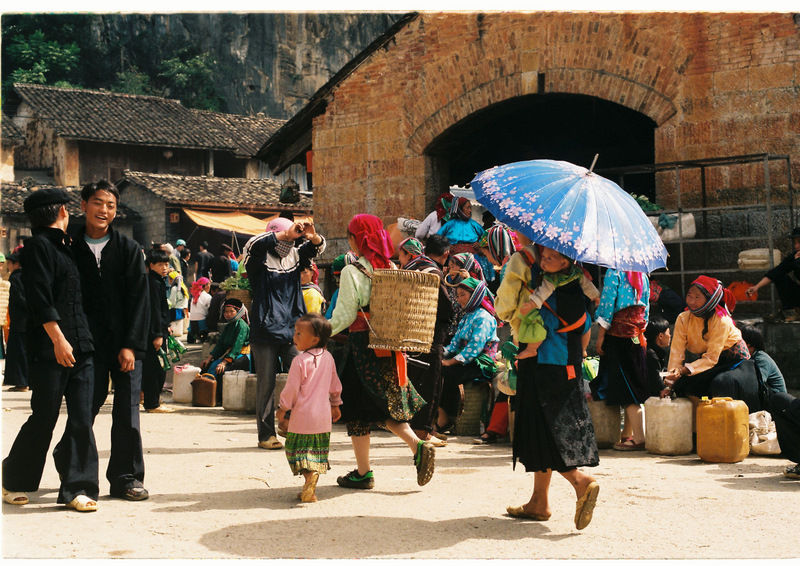
To locals, a fair market is a merry event; in mountainous areas, people only wear their best clothes to fair markets. In Hanoi, we have a long existed fair market like Buoi market which is located near West Lake. This fair was long ago a place for people to find animals like dogs, cats, rabbits, seedlings, and farming equipment. In northwest provinces like Lao Cai, Lai Chau, Hoa Binh, Ha Giang… the fair market is not only the fair market but also an important cultural event.
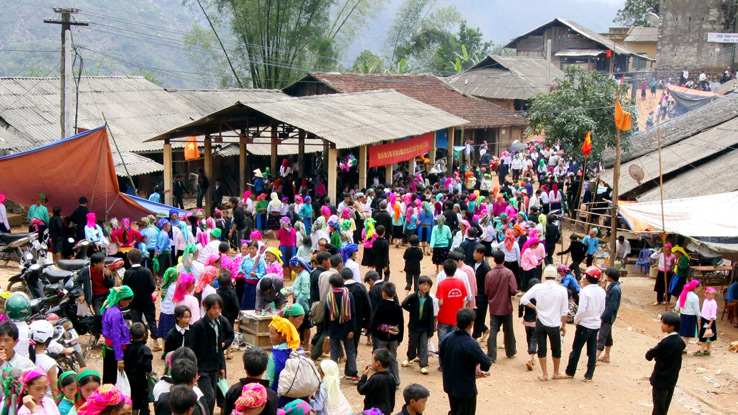
Khau Vai Love market takes place only once a year. Ethnic minorities come to this fair to meet their ex-lovers, or to find the love of their life. Nobody will get jealous when their husband or wife sit and drink and sing with their used-to-be-lover. After the fair, they come back to their family and wait to the next year’s fair. Sapa also has one love fair which happens every Saturday. Fair markets in highland provinces are not only for goods trading but also for cultural exchange and folklore performances.
Floating market
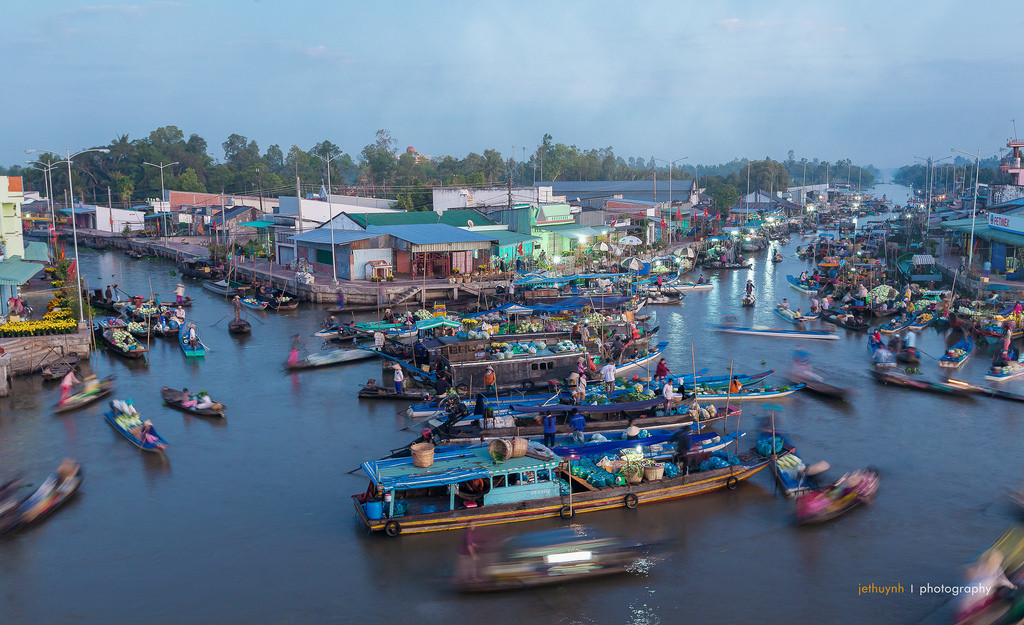
The floating market is very common in Mekong Delta region and one of the most outstanding cultural activities of the south. Due to the interlaced river and canal system of the delta, boats and dinghies are the main means of transport in this area. And for the convenience’s sake, after picking the fruits in the orchards on the dinghies, the farmers will sail directly to a floating market to sell to local dealers. Same goes for the fisheries. That’s why the floating market was born.
On the floating markets, you do not only find people buying and selling goods and foodstuffs, but you also find floating restaurants, floating bars, floating gas stations, and many other floating shops. The most famous floating market must be Cai Rang in Can Tho City. You have to visit the market by boat in the early morning. The biggest floating market in the Mekong Delta is the busy market of Phung Hiep which opens at 4.00 am till 11.00 am. You can find a product of the delta in these markets and enjoy the busy, merry atmosphere of the dwellers of the delta.
Visiting Vietnam partly means that you should visit a local market. This is the truest way to find out a little about the daily life in this S-shaped/’ land. All markets welcome bargaining and negotiating. You can pay as your budget allows but keep in mind that being respectful and polite only gives you good things. To avoid scams, be sure to fix the price with the seller before paying. There might be one or two sellers that might make you annoyed while dealing, be calm and wise to avoid any unnecessary conflict.
